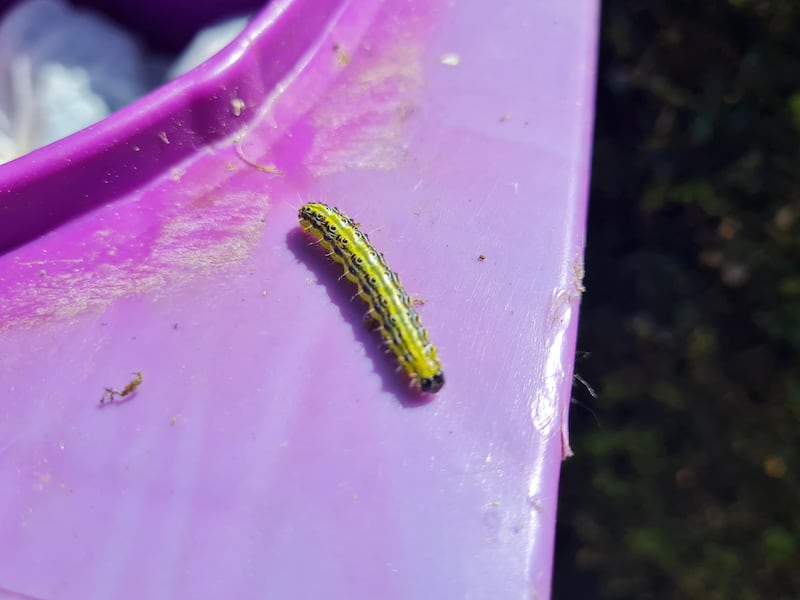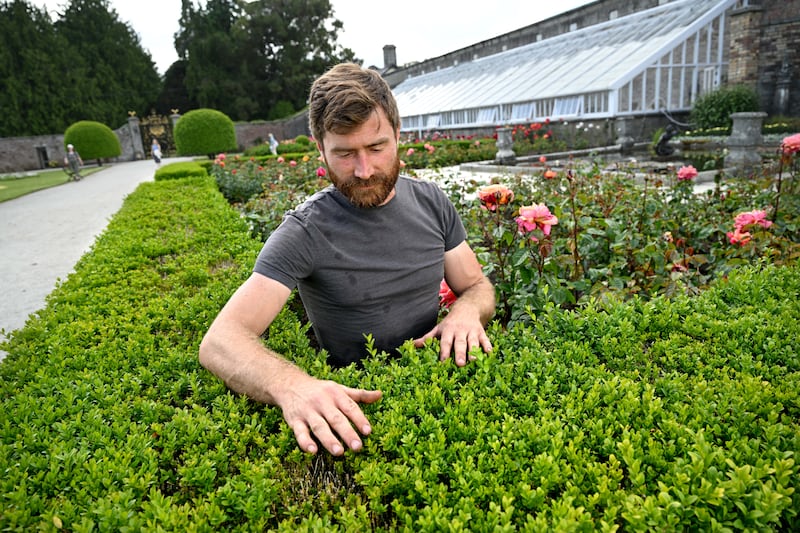Powerscourt Estate has replaced up to 80 per cent of its box plants in an attempt to prevent an invasion of box tree moths, according to head gardener Alex Slazenger. Gardeners at the Powerscourt Estate have not recorded the box tree moth or its destructive caterpillar form on their site but describe it as “inevitable” due to climate change.
The box tree moth originates from east Asia but was first found on mainland Europe in 2007 and was first found in Ireland in 2017. It is presumed that it was transported on infected boxwood plants.
The box tree moth has established breeding populations throughout the United Kingdom, making it well adapted to Irish conditions. The first known record of a suspected specimen in Ireland was caught in a moth trap in Waterford. The moths have since been found in Dublin, Cork, Waterford, Wicklow, Laois, Kildare, Clare, Donegal, Antrim and Down.
The caterpillars feed on both the leaves and the bark of the box tree, which kills the plant. It lacks predators to control it naturally in this country.
READ MORE
Powerscourt Estate have replaced 500m of box tree plants with dwarf Japanese yew hedging. The gardeners recommend not to plant box trees any more.
The Wicklow estate has taken this approach despite not having the box tree moth present in the gardens as it moves to be more sustainable and the chemical used to kill the moths is highly toxic. “It is rife around Dublin. If we did get it we wouldn’t be spraying chemicals,” said Mr Slazenger.

Some of the existing box trees on the estate have been killed by box blight, a resistant variety of fungal disease.
Mr Slazenger said climate change has impacted on the fungal diseases and pests they find on the estate. “We were once reliant on very cold winters to kill the blight.”
Powerscourt Estate has taken a number of “preventative measure” to avoid the arrival of box tree moths. Mr Slazenger stressed how the moths can “decimate plants overnight”.
Powerscourt is Ireland’s first premier visitor attraction to be certified by Sustainable Travel Ireland. “We’re looking in the garden to see what is right for the future and cutting down on chemicals,” said Mr Slazenger.

The futureproofing of the estate gardens was described as climate matching as the gardeners develop the gardens for the climate. “We pick species that will survive,” said Mr Slazenger. “New diseases and pests are nothing new. They have just moved around the planet as climate changed.”
Box blight or Buxus blight has also affected box hedging over the last number of years at some Office of Public Work sites such as St Stephen’s Green. The box hedging was replaced with other varieties such as yew and euonymus.
- Sign up for push alerts and have the best news, analysis and comment delivered directly to your phone
- Join The Irish Times on WhatsApp and stay up to date
- Listen to our Inside Politics podcast for the best political chat and analysis








